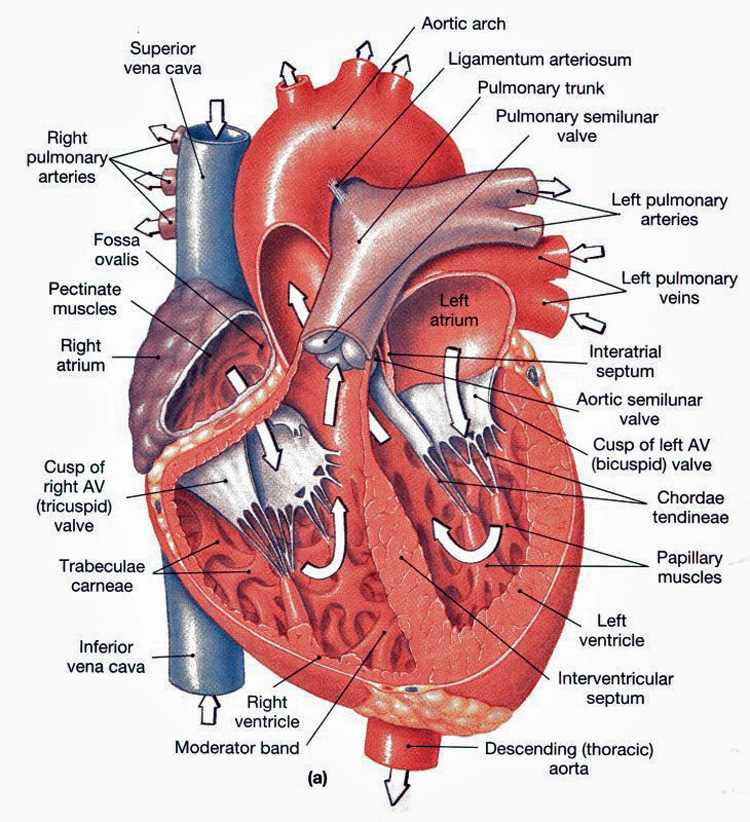Considering the fact that this muscle never gets to rest, the heart is a rather impressive organ.
Cardiovascular System
We spent the majority of this past week learning the cardiac and systemic blood flow. As it moves through the chambers of the heart, to the lungs, back into the heart and ultimately into circulation, the blood provides nutrients to the body that sustain life.
Lectures went beyond the anatomy and included cardiac histology for completeness. The physiology or functional breakdown of its parts gets quite complex. Through hormonal, neural, and metabolic control blood vessels change size to distribute the blood where it is needed most. This regulation is a core consideration for many diseases as the blood affects every body system.
During our Physical Diagnosis lab we attempted to hear the many heart sounds on our partners and associate them with the various actions that were occurring. If you have ever tried this, you will agree it is definitely a learned skill. No wonder cardiologists are consulted so often. In my research, I came upon the blog of a cardiologist/electrophysiologist from the Midwest that may be of interest to those considering cardiology as a career. Dr. Wes, as he is known, gives a great peek into the life of a specialty physician. As I am still trying to decide what field to work in, this was a good starting point to explore.
Clinical Corner
With so many cases, conditions and diseases that come up I thought this would be a good forum to mention them both for my memory and for your reading pleasure. Should you happen to find information that is incorrect or interesting that you would like to add, please leave a comment for others to read.
Atrial Fibrillation
After a week of cardiology I could not resist considering an abnormal heart condition. Of the four chambers of the heart, the two atria receive blood from the body or lungs. Blood is pumped from an atrium into a ventricle as it continues on its way. This occurs as a result of electrical activity that starts in the atrium which moves by conduction to the ventricles. In a normal functioning heart, the rhythm is synchronized to move the blood through the chambers in order.
In a heart that is experiencing atrial fibrillation the conduction system is does not effectively reach the ventricles and the atria shake erratically. This will decrease the flow of blood and ultimately oxygen to the body with a potential risk of clot formation. This commonly leaves the individual weak and uncomfortable. This is one of the commonest heart problems and can be treated with medications or more invasive procedures if necessary. This video provides a more detailed look at atrial fibrillation.
Like you have heard it before, "use it or lose it." Regular exercise and a healthy diet will keep your heart and blood vessels in shape to meet the demands of everyday activities. Don't take good health for granted and your heart will thank you.
The Doctor
Popular Posts This Week
-
While it's been some time since my last post here, this blog has been on hold during the busy years of residency. I could not be ...
-
This weeks dissection finally came to a head, literally. We sawed into the skull to remove the most important and complex organ in the body...
-
The start of our last block sure feels good. Soon enough we will be seeing patients and interacting with physicians in the community, unfort...
Occasionally posts are authored by request for compensation. Commentary is the opinion of the author and is not considered medical advice. Consult your health care professional for appropriate medical treatment.





0 comments:
Post a Comment
Share a suggestion, question or just leave your mark.